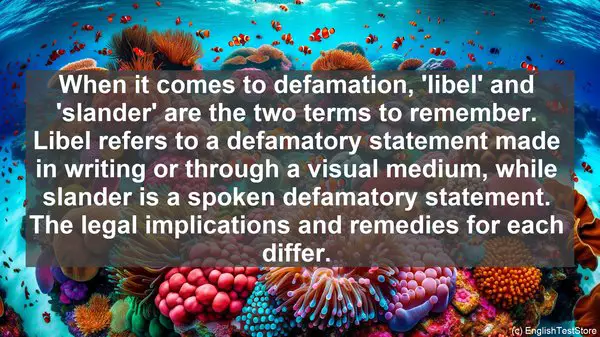Introduction: The Importance of Precise Language in Law
Hello everyone, and welcome to today’s lesson. When it comes to law and legal studies, precision in language is of utmost importance. A single word can have a significant impact on the interpretation of a legal document or the outcome of a case. In this lesson, we’ll be discussing the top 10 words that are commonly confused in this field. So, let’s get started!
1. Tort vs. Crime
The first pair of words that often causes confusion is ‘tort’ and ‘crime.’ While both involve some form of wrongdoing, they differ in terms of the legal consequences. A tort refers to a civil wrong, where the injured party can seek compensation, whereas a crime is a violation of a statute and can lead to criminal charges.
2. Plaintiff vs. Defendant
Next, we have ‘plaintiff’ and ‘defendant.’ In a legal case, the plaintiff is the party bringing the lawsuit, while the defendant is the one being sued. It’s essential to differentiate between the two, as their roles and responsibilities in the litigation process vary significantly.
3. Precedent vs. Stare Decisis
Moving on, ‘precedent’ and ‘stare decisis’ are often used interchangeably, but they have distinct meanings. A precedent is a past decision or ruling that serves as a guiding principle for future cases. On the other hand, ‘stare decisis’ is the doctrine of adhering to established legal principles, including precedents.

4. Libel vs. Slander
When it comes to defamation, ‘libel’ and ‘slander’ are the two terms to remember. Libel refers to a defamatory statement made in writing or through a visual medium, while slander is a spoken defamatory statement. The legal implications and remedies for each differ.
5. Jurisdiction vs. Venue
Jurisdiction and venue are often confused, but they pertain to different aspects of a legal case. Jurisdiction refers to the court’s authority to hear a case, while venue determines the most appropriate location for the trial. Understanding these distinctions is crucial for proper case management.

6. Larceny vs. Robbery
In criminal law, ‘larceny’ and ‘robbery’ are frequently used interchangeably, but they have distinct meanings. Larceny refers to the unlawful taking of someone’s property, whereas robbery involves the use of force or threat during the theft. The severity of the charges varies accordingly.
7. Habeas Corpus vs. Extradition
Habeas corpus and extradition are legal procedures, but they serve different purposes. Habeas corpus is a writ that challenges the lawfulness of a person’s detention, while extradition is the process of transferring an individual from one jurisdiction to another for trial or punishment.
8. Felony vs. Misdemeanor
When it comes to criminal offenses, ‘felony’ and ‘misdemeanor’ are the two broad categories. Felonies are more serious crimes, typically punishable by imprisonment for over a year, while misdemeanors are less severe offenses, often resulting in shorter sentences or fines.
9. Appellate Court vs. Trial Court
In the judicial system, there are different types of courts, including appellate and trial courts. Appellate courts review decisions made by lower courts, focusing on legal errors, while trial courts are where cases are initially heard and evidence is presented. Each has its distinct role in the legal process.
10. Statute vs. Regulation
Finally, we have ‘statute’ and ‘regulation.’ Statutes are laws enacted by legislative bodies, while regulations are rules and directives issued by administrative agencies to implement those laws. Understanding the hierarchy and interaction between these legal instruments is essential.
